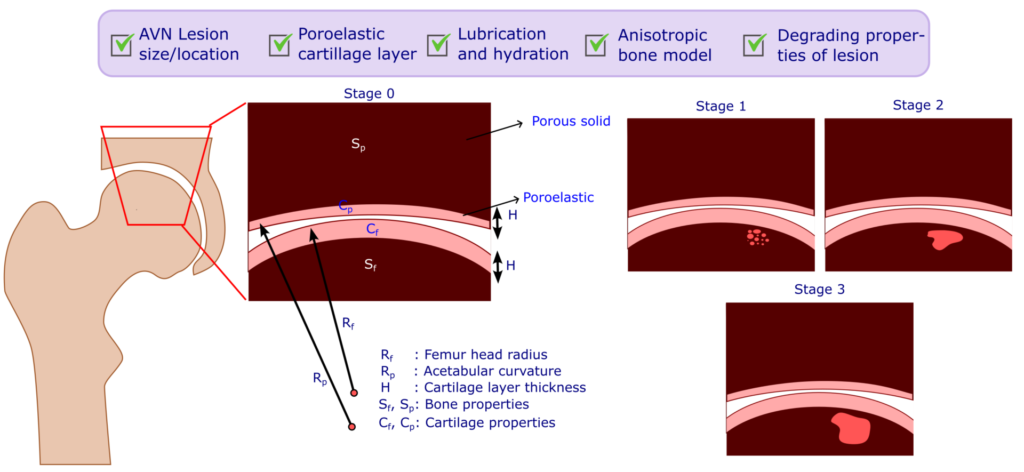
BioTrib-AVN focuses on avascular necrosis (AVN), a destructive disease due to the disruption of blood supply to the femoral head found in the younger population.
Research Objectives
The proposed research seeks to enhance modelling approaches in bone remodelling with the advanced cartilage models being generated at the University of Leeds, providing a key tool to mitigate the rising incidence of AVN.
BioTrib-AVN is broadly composed of two successive research objectives:
- Establish the link between AVN-induced bone deterioration, bio tribology and joint function, using a dynamic computational model that incorporates the evolution of the AVN from a bone function perspective.
- Explore currently employed late-stage interventions for AVN, that is surface replacement where the design will be considered in terms of bone remodelling.

BioTrib-AVN Researchers

Dr Basil Mathai
Post Doctoral Research Assistant
University of Leeds
I completed my graduation and postgraduation in mechanical Engineering and biomedical engineering respectively from India. I obtained my PhD from IIT Kharagpur for my doctoral thesis entitled “Bone ingrowth and remodelling around a porous-coated femoral implant” under the supervision of Prof. Sanjay Gupta and Prof. Santanu Dhara in 2021. My doctoral research was focused on the numerical modelling of biological phenomena of bone remodelling and ingrowth for the implanted femur. The study proposed anisotropic bone in remodelling frameworks, using multiple methods; a principal strain-based orthotropic tensor and using topology optimization of biomimetic elastic microstructures. A novel mechanoregulatory tissue differentiation framework based on multi-scale finite element models was developed, to account for local variations in host bone quality and interface micromotion.
As an early-stage researcher, I was honoured with various individual fellowships following my doctoral studies, including a national postdoctoral fellowship by the Science and Engineering Research Board (SERB), India, an institutional postdoctoral fellowship by IIT Madras and Marie Skłodowska-Curie Actions postdoctoral fellowship (UKRI funded), which encourages me to recognize research premises and advocate scientific solutions to them.
